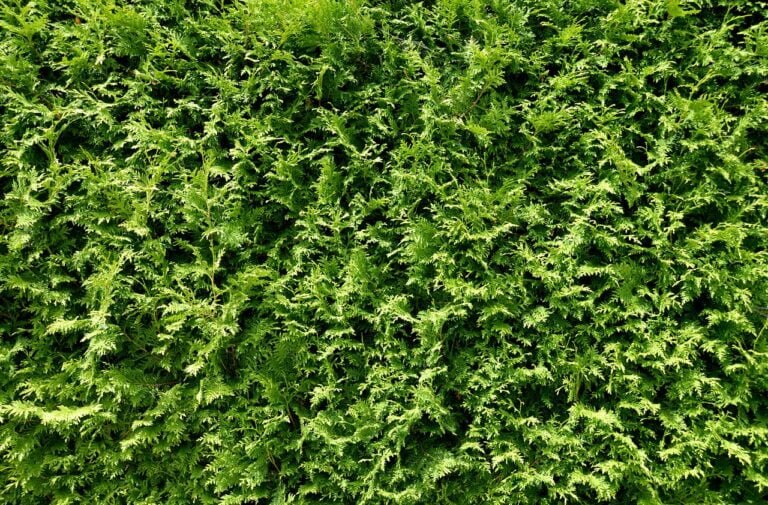Guide to Growing and Caring for Succulents and Cacti in Desert Landscaping
When growing succulents and cacti in desert landscaping, select drought-resistant varieties like agaves, aloes, and barrel cacti. Transplant carefully, using protective gloves and well-draining cactus mix. Water deeply but infrequently to prevent root rot. Make sure they receive indirect sunlight and well-draining soil with peat moss and perlite. Feed with a 13-6-6 liquid fertilizer mix during watering for strong growth. Keep an eye out for yellowing, it could be due to heat stress. Consider Agave parryi or Agave victoria-reginae for desert landscapes. Prioritize proper care for flourishing plants.
Selecting Drought-Tolerant Plant Varieties
When choosing plants for desert landscaping, opt for drought-tolerant varieties like agaves, aloes, and barrel cacti for minimal water requirements and easy maintenance. Succulents, such as agaves and aloes, are excellent choices due to their ability to store water in their fleshy leaves, making them well-suited for arid environments. These plants have adapted to survive in hot, dry climates by minimizing water loss, allowing them to thrive with little irrigation.
Agaves, known for their striking rosette shapes and dramatic foliage, add a unique aesthetic to desert gardens. Their architectural forms create focal points in landscaping while requiring minimal care. Aloes, with their vibrant blooms and spiky leaves, are not only visually appealing but also practical choices for water conservation. The barrel cactus, a classic desert plant, is another drought-tolerant option that stores water in its swollen stem, reducing the need for frequent watering.
Proper Handling and Transplanting Techniques
When transplanting succulents and cacti, it’s important to handle their delicate roots with care to avoid damage. Using thick carpet padding or foam during transportation can shield both the plant and your skin from harm. Remember to wear protective gloves when handling these plants to guarantee a smooth and safe transplanting process.
Transplanting Best Practices
To successfully transplant succulents and cacti in desert landscaping, it is crucial to handle the plants with thick leather gloves for protection against spines and follow proper techniques for digging and planting at the correct depth. When transplanting, make sure the hole’s depth matches that of the root ball to prevent issues with planting depth. Use a well-draining cactus mix or soil mix to fill the hole, promoting ideal root growth post-transplanting. Carefully remove the plants from their containers, taking precautions to avoid any injuries during the process. For the best results in establishing new growth, aim to transplant cacti in the spring or late summer. By following these best practices, you can increase the chances of successful transplantation and healthy development of your desert landscape plants.
Handling Delicate Roots
With a gentle touch, carefully handle the delicate roots of succulents and cacti to prevent damage during transplanting. When transferring these plants, it is essential to maintain the integrity of their root system. Using a gentle approach, remove them from their containers, ensuring the soil around the roots remains intact. Avoid pulling or tugging on the roots, as this can cause stress and harm to the plant. Transplant succulents and cacti in the warmer seasons to facilitate successful root establishment. Select a new planting location with well-draining soil to support healthy root growth and prevent waterlogging. By following these transplanting techniques and paying attention to the root system’s delicate nature, you can promote the overall health and vitality of your desert landscape.
Watering Guidelines for Desert Succulents
For essential growth and health of desert succulents, it is vital to water them deeply but infrequently, ensuring the soil is completely dry between waterings to prevent root rot and promote deep root development. Desert succulents, including cacti and other succulent plants, have adapted to survive in arid environments with limited water availability. By providing less water more efficiently, you mimic their natural habitat and support their overall well-being.
Overwatering desert succulents can be detrimental, leading to fungal diseases and even plant death in the arid climates they call home. To avoid these issues, it is essential to adhere to a strict watering schedule based on the dryness of the soil rather than a predetermined routine. Consider utilizing a drip irrigation system to deliver water directly to the roots of your desert succulents, ensuring they receive adequate hydration without the risk of excess moisture harming the plants.
Monitoring weather conditions is key to adjusting your watering frequency accordingly. During periods of high temperatures or increased sunlight exposure, desert succulents may require more frequent watering to thrive. By staying attuned to these environmental factors, you can provide essential care for your desert succulents, promoting their growth and longevity in your desert landscaping.
Ideal Light Exposure for Cacti and Succulents
In desert landscaping, guaranteeing the ideal light exposure for cacti and succulents is vital for their health and long-term survival. Here are some key points to ponder:
- Avoiding Direct Sunlight: Many cacti and succulents flourish in indirect sunlight to prevent sunburn. Direct exposure to intense sunlight can harm these plants, leading to sunburn, which in turn increases the risk of infection and rot. Gradually introducing them to direct sunlight can help them tolerate it better over time without causing damage.
- Shade for Protection: Young cacti and succulents may benefit from shade provided by nurse plants. These nurse plants can shield the delicate succulents from harsh sunlight until they are more established and better equipped to handle direct exposure. This protective measure can prevent sunburn and safeguard the health of the plants.
- Sunburn Risks: Sudden exposure to intense sunlight can be harmful to the health of cacti and succulents. Sunburn not only damages the external tissues of the plants but also weakens them internally, making them more vulnerable to diseases and other environmental stressors. Managing their exposure to sunlight is crucial in avoiding such risks.
- Longevity and Health: Properly managing light exposure is essential for the overall health and longevity of cacti and succulents in desert landscapes. By providing the right balance of light, shade, and gradual acclimation, you can help these plants thrive and beautify your desert garden with their unique beauty.
Soil Requirements for Healthy Plant Growth
To guarantee robust growth of succulents and cacti in desert landscaping, the soil composition plays a pivotal role in offering sufficient drainage and essential nutrients for ideal root health. In the case of succulents and cacti, they thrive in loose, well-draining soil that prevents water-logging and root suffocation. An ideal soil mix consists of equal parts soil, sand, peat moss or coconut coir, and perlite. This composition ensures peak root health by providing the necessary aeration and drainage for the roots to thrive.
Proper drainage is critical for succulents and cacti as roots require air and oxygen to grow and develop effectively. Using a suitable potting mix with the right soil composition promotes healthy plant growth and prevents issues like root rot in desert landscaping. Additionally, liquid nutrients may be necessary to supplement the soil mix and make certain that these plants receive the essential nutrients they need for robust growth.
In desert landscaping, where water is scarce and the soil tends to be dry, getting the soil composition right is fundamental for the long-term health of succulents and cacti. By paying attention to the potting mix, drainage, and overall soil composition, you can create an environment where these plants can thrive and flourish despite the challenging conditions of the desert landscape.
Feeding and Fertilizing Tips for Succulents
I suggest using a liquid 13-6-6 fertilizer mixture to effectively feed succulents, ensuring they receive essential nutrients. When adding liquid fertilizer to watering sessions, it aids in providing the necessary elements for healthy growth. Keep in mind that high nitrogen fertilizers may lead to excessive vegetative growth at the expense of flowering in succulents.
Essential Nutrient Requirements
When caring for succulents in desert landscaping, ensuring they receive the right balance of necessary nutrients through correct feeding and fertilizing techniques is crucial for their growth and health. Here are some essential tips to keep in mind:
- Choose a balanced liquid 13-6-6 fertilizer for best growth.
- Mix liquid fertilizers with water for efficient absorption during watering.
- Avoid high nitrogen fertilizers that can stimulate leaf growth over flowering.
- Integrate dry chemical field fertilizers into the soil to provide essential nutrients.
Proper fertilization practices play a significant role in the overall well-being and vibrancy of succulents in desert landscapes.
Organic Vs. Synthetic Fertilizers
In determining the most suitable fertilizer for succulents in desert landscaping, it is important to weigh the benefits and considerations of organic versus synthetic options. Organic fertilizers such as compost, manure, and worm castings offer natural nutrients without harsh chemicals, promoting soil health and microbial activity for improved growth in succulents. On the other hand, synthetic fertilizers are chemical-based products with specific nutrient ratios like 10-10-10, providing quick and targeted nutrients to address specific deficiencies or growth needs in succulents. The choice between organic and synthetic fertilizers ultimately depends on personal preferences, environmental concerns, and the desired outcomes for succulent care. Consider the unique needs of your succulents and cacti when deciding between these two types of fertilizers.
Frequency of Feeding
To guarantee ideal growth and health for your succulents, understanding the perfect frequency of feeding is essential for their well-being and development.
- Regular Feeding: Providing a liquid 13-6-6 mixture during the growing season guarantees faster growth and overall health for your succulents.
- Balanced Nutrition: Feeding with a liquid fertilizer mixed into watering helps prevent nutrient deficiencies and supports robust growth.
- Avoid Overfeeding: High nitrogen fertilizers can lead to excessive vegetative growth at the expense of flowering in succulents, so moderation is vital.
- Preventing Issues: Proper feeding with dry chemical field fertilizers can help prevent common pests attracted to weak or malnourished succulents.
Common Care Issues and Solutions
Regularly monitoring the color and texture of your cacti and agave plants can help address common care issues before they escalate. Yellowing in cacti and agave is often a sign of stress due to high temperatures. Providing supplemental water during these periods can help alleviate the yellowing and keep your plants healthy. It’s essential to keep in mind that while cacti and succulents are known for their drought tolerance, they still need water to thrive.
Some popular agave species like Agave parryi, Agave victoria-reginae, and Agave bovicornuta are excellent choices for desert landscaping due to their ability to withstand dry conditions. However, even these hardy plants can struggle if they don’t receive enough water. Keeping a careful eye on your plants and adjusting your watering schedule accordingly is key to ensuring they remain happy and healthy.
If you encounter issues with your cacti or agave, seeking advice from consulting services or online resources like Desert Gardening 101 can provide valuable insights. Additionally, memberships like Through the Garden Gate offer ongoing support for maintaining your desert landscape. Keep in mind, even established cacti benefit from supplemental water, especially during the hot summer months, to maintain their health and vigor.






